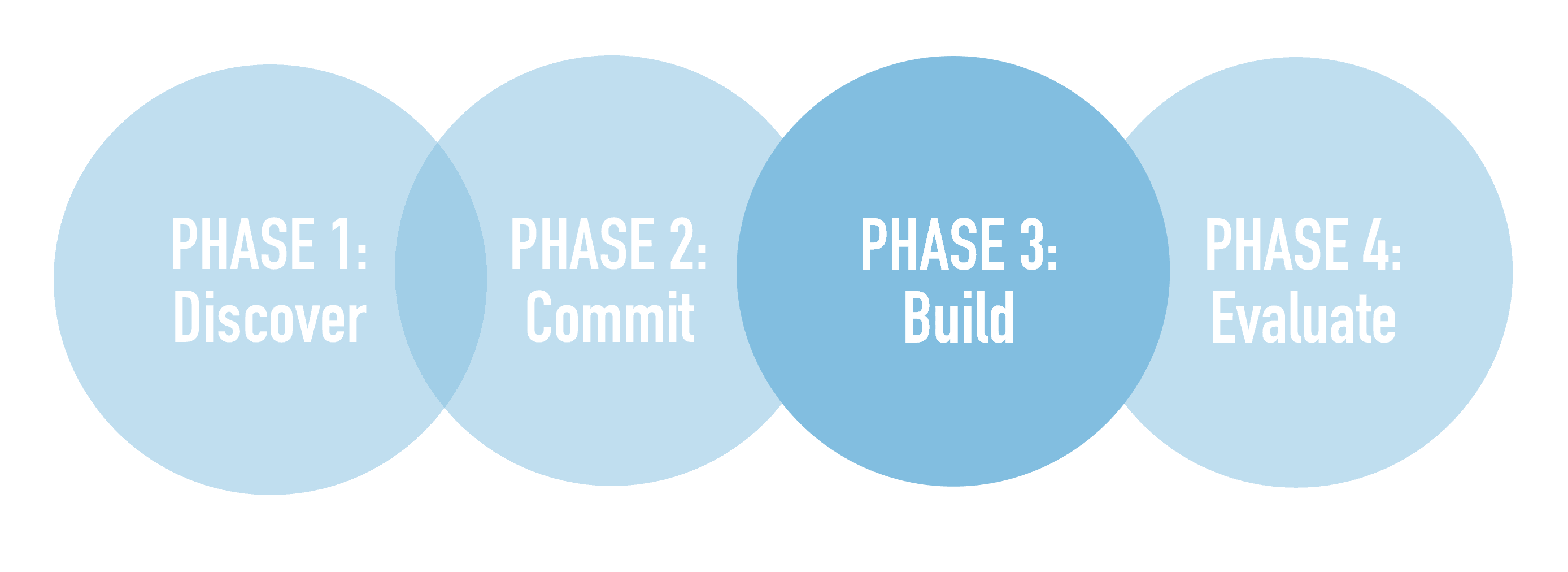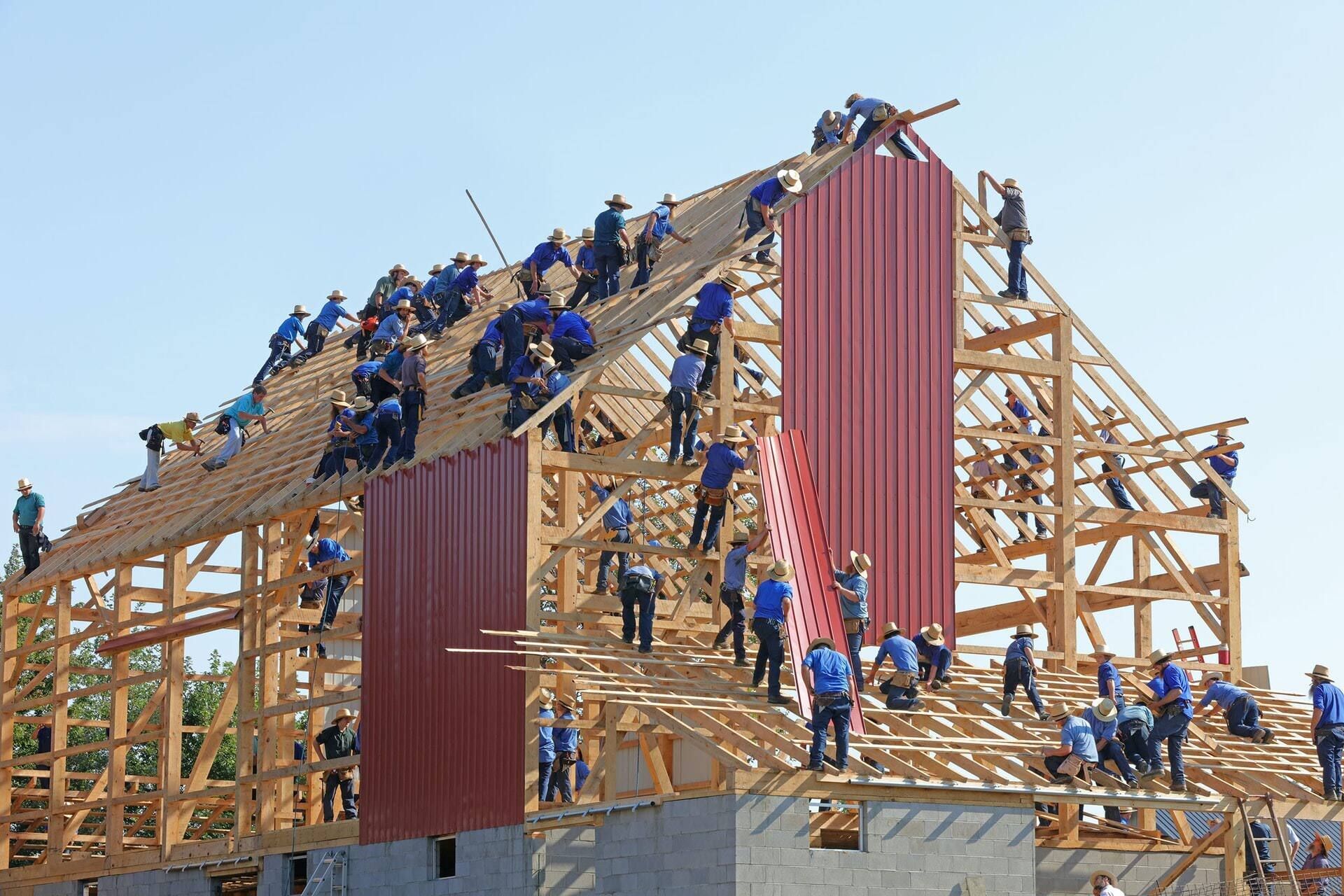Photo by Randy Fath, unsplash.com
After establishing a focus and commitment, the next phase involves building and launching a plan of compassionate action steps to create a more compassionate community.

Step 7: Build momentum by involving other community members, linking to community events, and inviting nearby communities to participate. Educate the broader community about what it means to become a Compassionate Community, and acknowledge the acts of compassion that are already working within your community.
By now, you have established a core leadership team that is diverse and inclusive. You have assessed your community’s strengths and vulnerabilities in order to determine what challenges need to be addressed first. You have made a plan for putting compassion into action, focusing on one or more issues that are causing pain or suffering to some group of people within your community. Now it’s time to bring in as many community members as possible—let them know your plan, gain their support, and build momentum toward the well-being of the entire community. Celebrate and communicate the compassion that is the wellspring of your plans!
Depending on the size and resources of your community, you will discover various channels for communicating your plan and enthusiasm to the community. For example, you might use social media and/or local print publications to announce a kickoff event—which might be combined with some other community activity such as a festival or concert or some other celebration.
You could contact leaders in various sectors of your community, or those in nearby communities to build a base of support. Offer to provide presentations for community organizations and groups who may be interested in joining in to address the issue that you have identified. If your plan includes the need for funds, this is the time to gain the support of local businesses, community organizations, faith groups, and fund-granting foundations as well as individuals who recognize the need for action.
And then it’s time to get to work, to put your plans into action. It will be helpful at times to “pilot” a particular activity on a small scale to understand if you are meeting your objectives. Setting both short-term and long-term objectives—and constantly monitoring to evaluate them—will also be helpful, as that will allow you to make adjustments, remain flexible, and create new strategies when necessary.
Step 8: Communicate within the community on a regular basis—meetings, emails, articles, social media, and whatever other means—to keep people informed and energized.
Maintaining enthusiasm and energy is also important to the success and sustainability of your project. Regular meetings, emails, articles in local media, postings on social media, and whatever other means you have to communicate your actions to the community will help you sustain the work and also bring further support to your compassionate actions. Be sure to report your activities to the Charter so that other communities can learn from what you have accomplished.
Step 9: Reach out to share globally—for example, by partnering with a community in another country.
Karen Armstrong—who is the founder of the Charter for Compassion and a world-renowned author—has spoken of her vision for the next steps toward a truly compassionate world.
I think the [Compassionate Cities and Communities] program could help us to break down the divisions in our polarized world. I hope that we can "twin" the Compassionate Cities, so that a city in the Middle East could link up with a city in the USA, so that people can form electronic friendships, universities and colleges link up together across the divide, and the twinned cities share news and problems.
At some point, your community will be ready to reach out your hands with compassion to another community—perhaps a city or town or neighborhood that is not far from you that has similar challenges and could benefit from a partnership with you. Or you may be inspired to reach across the planet to the people living in a city or town or neighborhood in another country on a distant continent to find a mutually beneficial partnership founded on the concept of compassion for everyone, everywhere in the world. For example, Compassionate St. Augustine (in Florida, USA) has reached out to the city government of Cartagena, Colombia, requesting that they work simultaneously to be compassionate sister cities along with Aviles, Spain. These three geographically distant communities will work together to confront difficult issues, and share partner resources that will eventually result in good works, problem solving and a deeper, more meaningful exchange of resources and cooperation.
You and those who have collaborated with you have made a positive difference in your community. You have worked hard to develop a spirit of compassion within the community, and you have established processes or programs to relieve the suffering of some group or groups within your population. You have done an evaluation to learn how effective your work has been, and you have adjusted and expanded your plans to keep working toward your vision of a Compassionate Community. Perhaps you have even reached out to share your experiences with other communities who want to become Compassionate Communities. Congratulations!
Now you will need to take some time to think about how to sustain the spirit of compassion that has stirred your community to take action, and how to ensure that your work will continue to be helpful to other individuals and groups. You may decide that a pilot program that was so successful should be expanded and carried forward. For example, you may have established a program to provide quality, affordable childcare for families who would not otherwise have access to such care. Your evaluation and analysis have shown that both children and their families have benefited. You develop a plan to expand the program. That may mean that you have to seek greater funding—from individuals, government, foundations, or other organizations. It may happen that your childcare program becomes a program of an existing funding source—such as the educational system.
In addition to financial stability, you may also want to consider how to best communicate the outcomes of your work—providing data and statistics but also giving voice to gratitude and the sense of “elevation” that is felt by both those who are the recipients of compassionate action and those who have been moved to perform compassionate acts. And finally, you will know that the work you have done and that you continue to do is not an isolated act but rather a flowing stream which flows into the ever increasing rivers of compassion, which in turn become a sea of compassion—for all living things and for our planet.


